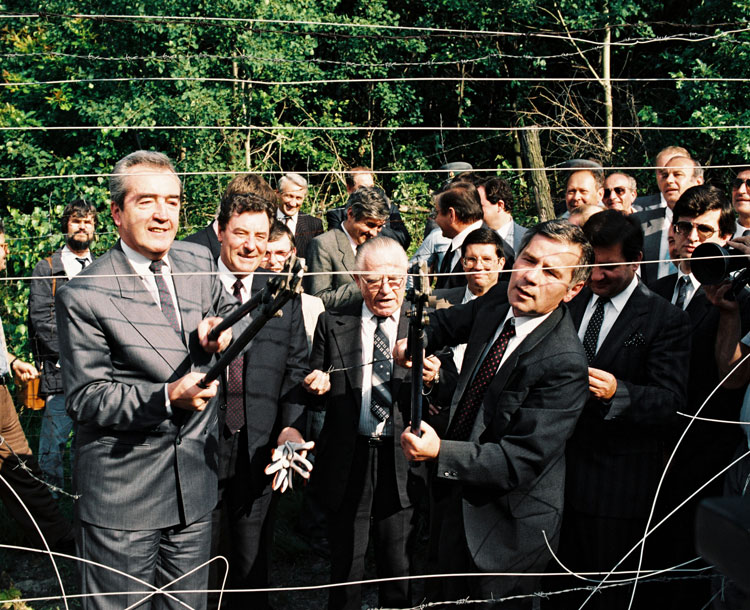Europe 1989 - 2009
“Divide│United: The Dawn of a New Europe”

The year 2009 marks the 20th Anniversary of the fall of the Iron Curtain. The Austrian Federal Ministry for European and International Affairs has organized a series of wide-ranging events during the year to honor this historic anniversary. The program entitled, “Divided │United: The Dawn of a New Europe,” aims at familiarizing young people in Europe and throughout the world with the historic significance of the enormous political transitions which took place in 1989 and the subsequent impact on world politics.
Although the fall of the Iron Curtain has been studied extensively and analyzed by historians, the process of the “soft” or “velvet” revolution or the historic dimension of the “triumph of the unexpected,” as French writer George Steiner referred to the tearing down of the wall in Berlin, has all but faded in the consciousness of the broader public. The Europe of the 21st Century, however, is unthinkable without the events which preceded the miraculous year of 1989 and the years thereafter.
Austria forged lasting political, diplomatic and human bridges with its neighbors beyond the Iron Curtain beginning with the Uprising in Hungary (1956) and during the Prague Spring (1968). As a neutral country it served as a hub between the East and the West, providing humanitarian assistance to thousands of refugees and functioning as a place for encounters, like the historic meeting between John F. Kennedy and Nikita Khrushchev in 1961. After the end of the Cold War, Austria served as a ‘Gateway to Central and Eastern Europe,’ with many foreign companies having established their CEE headquarters in Austria. The end of the Cold War afforded new opportunities in the international community: In 1995 Austria became a member of the European Union, and during the last twenty years the Danube region has gained in importance, with Austria developing close relations with Central- and Southeastern Europe. For this reason Austria has launched an initiative to commemorate the significance of the past transformation and the potential for young people working toward a new Europe.
The series of events will showcase exhibitions, publications, discussions and interviews with eye witnesses. Among other highlights, the program includes: The opening of the exhibition on the border crossing between Lower Austria and the Czech Republic on April 17; festivities in Burgenland which celebrated twenty years of the fall of the Iron Curtain (April 26-27); a forthcoming ceremony in Budapest on June 27; and the highlight of the anniversary, the Hofburg’s “Congress of Europe,” (June 28-29), focusing on discussions conducted by panels and the public of four main subjects: politics, culture, trade and youth.
For detailed information, see: http://www.1989-2009.at
